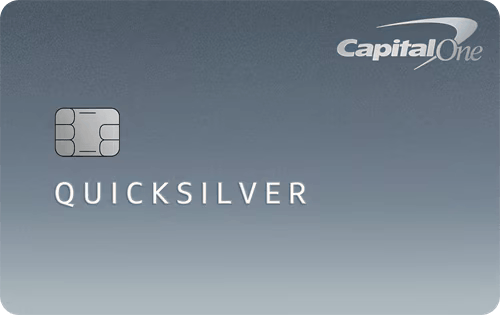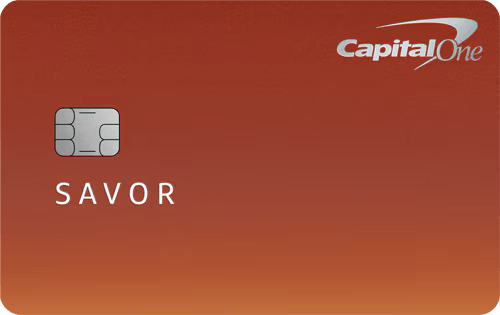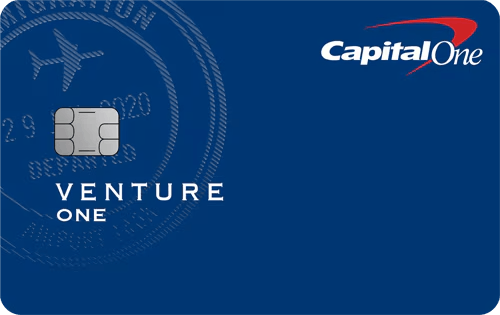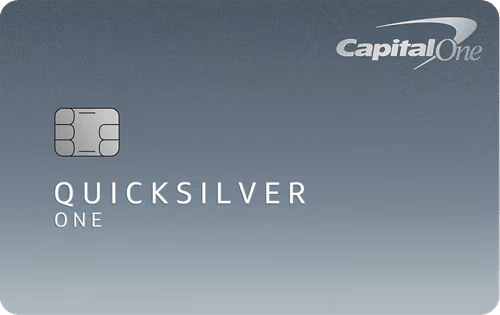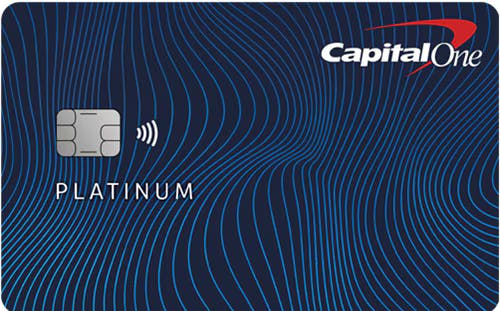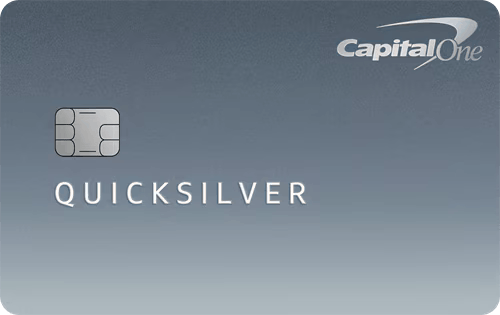Capital One credit cards
Our picks for cards from this bank.
Great for simple cash back††
Great for simple cash back††
Capital One Quicksilver Cash Rewards Credit Card
Intro purchase APR
0%* for 15 monthsRegular purchase APR
19.24% - 29.24% (Variable)Annual fee
$0
Intro purchase APR
0%* for 15 months
Regular purchase APR
19.24% - 29.24% (Variable)
Annual fee
$0
- 0% intro APR on purchases and balance transfers for 15 months; 19.24% - 29.24% variable APR after that; balance transfer fee applies, 3% fee on the amounts transferred within the first 15 months, 4% at a promotional APR that Capital One may offer you at any other time
- Earn a one-time $200 cash bonus after you spend $500 on purchases within 3 months from account opening
Great for practical premium perks††
Great for practical premium perks††
Capital One Venture X Rewards Credit Card
Intro purchase APR
N/ARegular purchase APR
19.99% - 29.24% (Variable)Annual fee
$395
Intro purchase APR
N/A
Regular purchase APR
19.99% - 29.24% (Variable)
Annual fee
$395
- Earn 75,000 bonus miles when you spend $4,000 on purchases in the first 3 months from account opening, equal to $750 in travel
- Receive a $300 annual credit for bookings through Capital One Travel, where you'll get Capital One's best prices on thousands of trip options
Great for high cash back rates††
Great for high cash back rates††
Capital One Savor Cash Rewards for Good Credit
Intro purchase APR
N/ARegular purchase APR
29.74% (Variable)Annual fee
$0
Intro purchase APR
N/A
Regular purchase APR
29.74% (Variable)
Annual fee
$0
- Earn unlimited 3% cash back at grocery stores (excluding superstores like Walmart® and Target®), on dining, entertainment and popular streaming services, plus 1% on all other purchases
- Earn 8% cash back on Capital One Entertainment purchases
Great for travel rewards with no annual fee††
Great for travel rewards with no annual fee††
Capital One VentureOne Rewards for Good Credit
Intro purchase APR
N/ARegular purchase APR
29.74% (Variable)Annual fee
$0
Intro purchase APR
N/A
Regular purchase APR
29.74% (Variable)
Annual fee
$0
- $0 annual fee and no foreign transaction fees
- Earn 1.25X miles on every purchase, every day
Great for cash back and average credit††
Great for cash back and average credit††
Capital One QuicksilverOne Cash Rewards Credit Card
Intro purchase APR
N/ARegular purchase APR
29.74% (Variable)Annual fee
$39
Intro purchase APR
N/A
Regular purchase APR
29.74% (Variable)
Annual fee
$39
- Earn unlimited 1.5% cash back on every purchase, every day
- No rotating categories or limits to how much you can earn, and cash back doesn't expire for the life of the account. It's that simple
Great for no annual fee††
Great for no annual fee††
Capital One Platinum Credit Card
Intro purchase APR
N/ARegular purchase APR
29.74% (Variable)Annual fee
$0
Intro purchase APR
N/A
Regular purchase APR
29.74% (Variable)
Annual fee
$0
- No annual or hidden fees. See if you're approved in seconds
- Be automatically considered for a higher credit line in as little as 6 months
Great for graduating to unsecured credit††
Great for graduating to unsecured credit††
Capital One Quicksilver Secured Cash Rewards Credit Card
Intro purchase APR
N/ARegular purchase APR
29.74% (Variable)Annual fee
None
Intro purchase APR
N/A
Regular purchase APR
29.74% (Variable)
Annual fee
None
- No credit score required to apply, but may be used if available
- No annual or hidden fees, and you can earn unlimited 1.5% cash back on every purchase, every day. See if you're approved in seconds
Great for high flat-rate travel rewards††
Great for high flat-rate travel rewards††
Capital One Venture Rewards Credit Card
Intro purchase APR
N/ARegular purchase APR
19.99% - 29.24% (Variable)Annual fee
$95
Intro purchase APR
N/A
Regular purchase APR
19.99% - 29.24% (Variable)
Annual fee
$95
- Enjoy $250 to use on Capital One Travel in your first cardholder year, plus earn 75,000 bonus miles once you spend $4,000 on purchases within the first 3 months from account opening - that’s equal to $1,000 in travel
- Earn unlimited 2X miles on every purchase, every day
Great for simple cash back††
Great for simple cash back††
Capital One Quicksilver Cash Rewards for Good Credit
Intro purchase APR
N/ARegular purchase APR
29.74% (Variable)Annual fee
$0
Intro purchase APR
N/A
Regular purchase APR
29.74% (Variable)
Annual fee
$0
- Earn unlimited 1.5% cash back on every purchase, every day
- $0 annual fee and no foreign transaction fees
Great for high cash back rates††
Great for high cash back rates††
Capital One Savor Cash Rewards Credit Card
Intro purchase APR
0% intro on purchases for 15 monthsRegular purchase APR
19.24% - 29.24% (Variable)Annual fee
$0
Intro purchase APR
0% intro on purchases for 15 months
Regular purchase APR
19.24% - 29.24% (Variable)
Annual fee
$0
- 0% intro APR on purchases and balance transfers for 15 months; 19.24% - 29.24% variable APR after that; balance transfer fee applies, 3% fee on the amounts transferred within the first 15 months, 4% at a promotional APR that Capital One may offer you at any other time
- Earn a one-time $200 cash bonus once you spend $500 on purchases within the first 3 months from account opening
More cards by category
Shop all cardsMore ways to browse cards
†† The opinions you read here come from our editorial team. Intuit Credit Karma receives compensation from third-party advertisers, but that doesn’t affect our editors' opinions. Our marketing partners don’t review, approve or endorse our editorial content. It’s accurate to the best of our knowledge when it’s posted.
